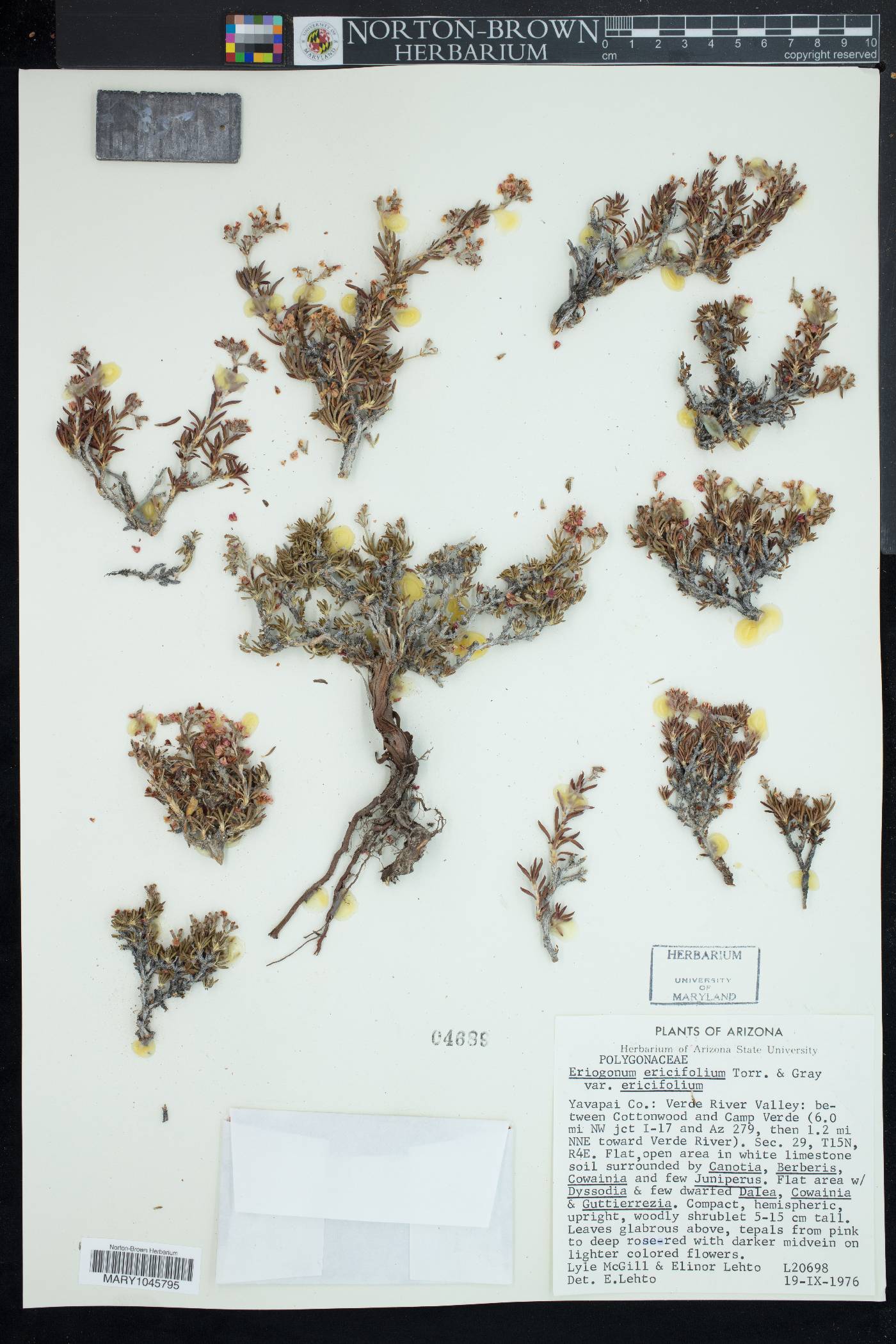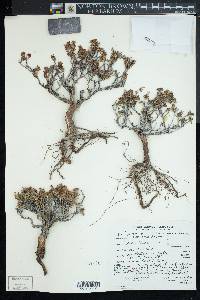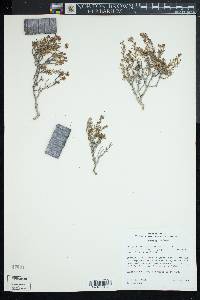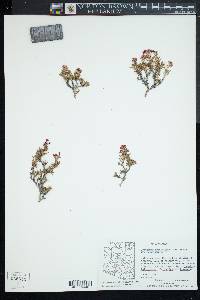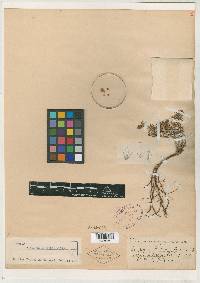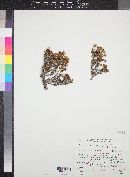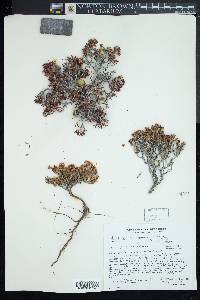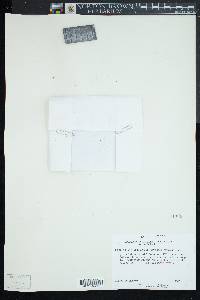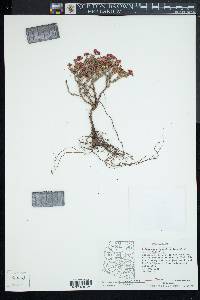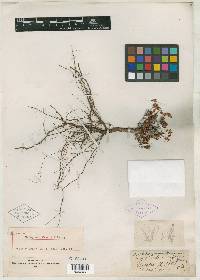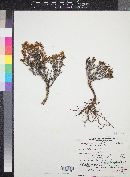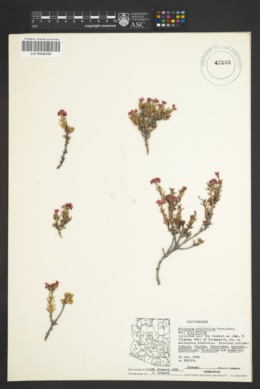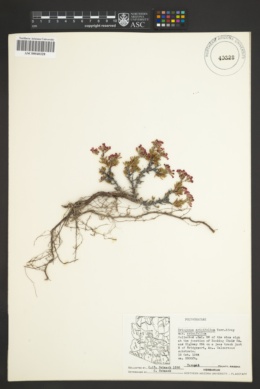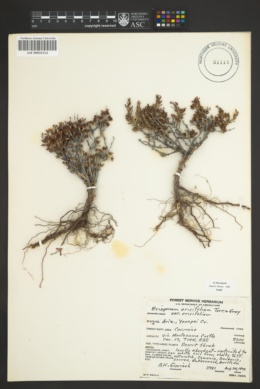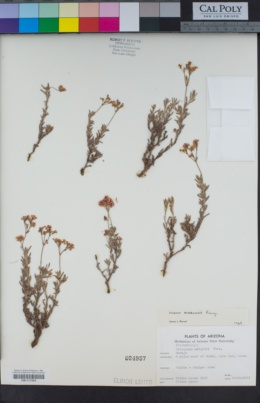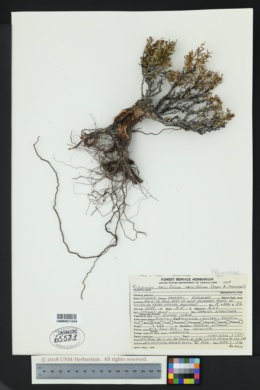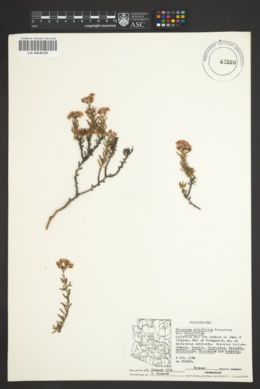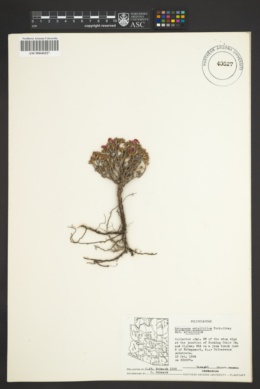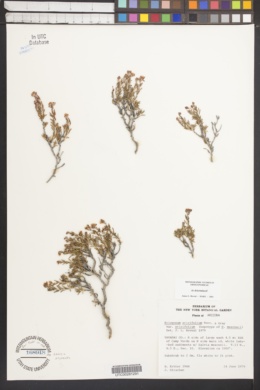
|
|
|
|
Family: Polygonaceae
Yavapai County buckwheat
[Eriogonum mearnsii Parry] |
FNA 2005, Kearney and Peebels 1969 Duration: Perennial Nativity: Native Lifeform: Subshrub General: Herbaceous perennials, stems spreading or matted, to 30 cm long, with persistent leaf bases, caudex stems absent or compact, aerial flowering stems spreading to erect, slender, solid, not fistulose, to 1 cm high, floccose to thinly tomentose, or glabrous, greenish. Leaves: Alternate or whorled, cauline blades usually 1 per node or fascicled, linear, 6-10 mm long and to 2 mm wide, densely white-tomentose below, glabrous and green above, with revolute (curling under) margins, petioles to 2 mm long. Flowers: White to rose, the glabrous, flower-like perianth 2-3.5 mm long, tepals connate at the base, dimorphic, those of the outer whorl obovate, 1-2 mm wide, those of inner the whorl oblanceolate, to 1 mm wide, stamens slightly exserted, 2-3 mm, filaments pilose proximally, involucres subtending the inflorescences, 1 per node, turbinate, 1.5-3.5 mm long and 1-2 mm long with floccose surfaces and 5 erect teeth roughly 0.5 mm long, peduncles absent, inflorescences umbellate-cymose to cymose, compact, 0.5-1 cm long and 0.5-2 cm wide, the branches usually dichotomous proximally, otherwise with others suppressed, surfaces floccose or glabrous, usually with 3 scalelike, linear, subtending bracts 0.5-1.5 mm long. Fruits: Achenes light brown, 2-2.5 mm, glabrous except for papillate beak. Ecology: Found on gravelly or rocky soils or on slopes of lacustrine (ancient lake bed) silt, in mixed grasslands, chaparral and oak-woodlands, from 3,000-3,500 ft (914-1067 m); flowering August-November. Distribution: Arizona only. Notes: This species is apparently rare, and FNA has a very small elevational range for this species, possibly making it a good candidate for further study. Ethnobotany: Specific uses for this variety are unknown, but other species in the genus have uses; plant used for severe pain in hips and back, hemorrhage, menstruation medicine, to expedite childbirth, for internal pains, especially stomach pain, general indisposition, syphilis, infusion of plant taken to shrink the uterus and reduce dysmenorrhea, infusion of flowers used as an eyewash, to clean out the intestines, infusion of flowers and leaves used as a mouthwash for pyorrhea, leaves, growing near the root, used as a physic, salve of dry leaves or leaf ash mixed with grease used for swellings, decoction of roots taken for diarrhea, heart medicine, plants used in steambath for rheumatism, stiff and aching joints and muscles, and shoots and seeds used for food, stems used to brush off spines on fruits. Synonyms: None Editor: LCrumbacher2012 Etymology: Eriogonum comes from the Greek erion, "wool," and gonu, "joint or knee," in reference to the hairy or woolly joints of some of the species of the genus, and ericifolium means with leaves like genus Erica. |
This project was made possible in part by the Institute of Museum and Library Services [MG-70-19-0057-19].
Powered by Symbiota

